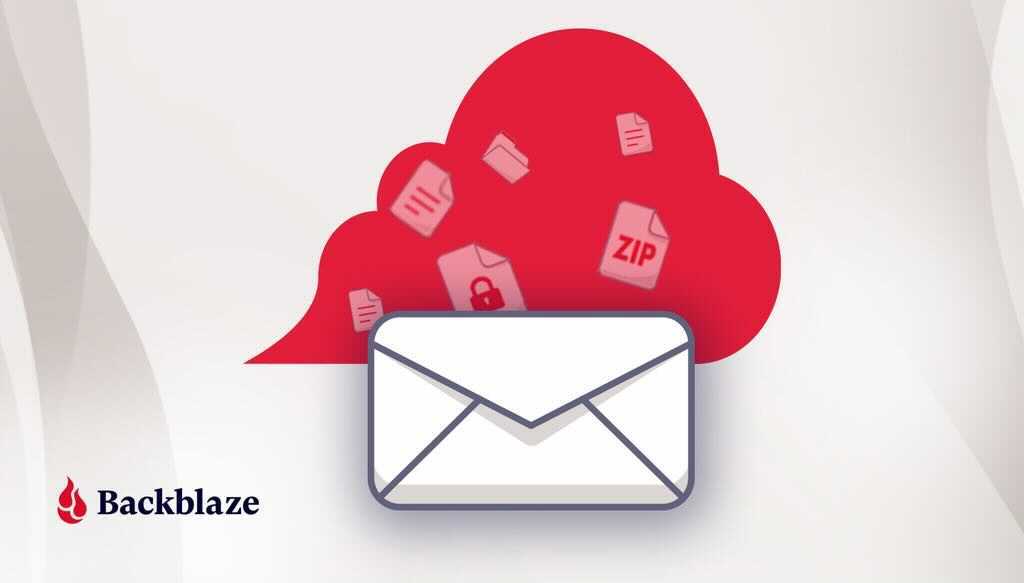There are a few different ways you can back up your emails from webmail. One way is to download them to your computer using an email client like Microsoft Outlook or Thunderbird. Another way is to use an email backup service like Gmail Backup or Mailstore.
Finally, you can also export your emails from webmail as a file and then save them to an external hard drive or cloud storage service like Dropbox or Google Drive.
- Log into your webmail account
- Go to the Settings or Options page
- Look for the section on backing up or exporting data
- Follow the instructions to export your emails to a file on your computer
How to Export Emails from Webmail to Outlook
Email is a crucial part of our lives. We use it for work, to keep in touch with friends and family, and for managing our online accounts. So what happens when you want to change email providers?
How do you export your emails from webmail to Outlook?
The process is actually fairly simple, but there are a few things you need to know before you get started. Here’s a step-by-step guide on how to export your emails from webmail to Outlook.
1) The first thing you need to do is log into your webmail account and open up the email that you want to export.
2) Next, click on the “More” button (it looks like three dots) and select “Export” from the drop-down menu.
3) A new window will pop up asking you where you want to save the exported file.
Choose a location and then click “Save.”
4) Now it’s time to open Outlook. Go to File > Open & Export > Import/Export.
5) Select “Import from another program or file” and click “Next.”
6) Choose “Outlook Data File (.pst)” and click “Next.
How to Take Backup of Emails from Webmail Roundcube
Taking backup of emails from Roundcube is a simple and straightforward process. You just need to follow these steps:
1) Login to your Roundcube account.
2) Go to the Preferences section and click on the “Backup” tab.
3) Select the format in which you want to download your emails (Eml, Mbox or ICS).
4) Click on the “Generate Backup” button.
5) Your backup will be downloaded in the selected format.
How to Backup Webmail to Gmail
Backing up your webmail to Gmail is a simple process that only requires a few steps. First, you will need to log in to your webmail account and locate the settings menu. Within the settings menu, you will need to find the option for backing up your account.
Once you have found this option, simply select it and follow the prompts. Depending on your webmail provider, you may be asked to provide additional information such as an email address for backup purposes. After you have completed these steps, your webmail should begin backing up automatically to Gmail.
How to Save Webmail Emails to Hard Drive
Email is a popular way to communicate, and many people use web-based email services like Gmail, Yahoo Mail, and Outlook.com. While these services are convenient, they can also be risky because your emails are stored on someone else’s servers. If those servers are ever hacked or taken down for maintenance, you could lose access to your emails.
That’s why it’s important to back up your webmail emails on your own computer. That way, even if something happens to the email service itself, you’ll still have a copy of your emails safe on your own hard drive.
Here’s how to save your webmail emails to hard drive:
1. Export Your Emails: Most webmail services allow you to export your emails as an .eml file. This is a standard file format that can be opened in most email programs (including Microsoft Outlook).
To export your emails from Gmail, log into your account and click the “Settings” gear icon. Then select “Forwarding and POP/IMAP.” Under “IMAP Access,” click “Enable IMAP.”
Next, open Microsoft Outlook (or another email program) and add a new account using the IMAP settings provided by Gmail. Once you’ve added the account, you should see all of your Gmail messages in Outlook (or whatever program you’re using). From there, you can simply drag-and-drop the messages into a local folder on your hard drive—just like you would with any other type of file—to back them up.
2. Use an Email Backup Program: If you don’t want to go through the hassle of setting up IMAP in an email program, there are several third-party programs that will do it for you; they just require a little more set-up upfront but will save you time in the long run. One such program is Email Archiver Pro ($29), which works with Gmail, Yahoo Mail, iCloud mail accounts, and more; it will even archive attachments along with the emails themselves. Another option is Mailstore Home ($0), which offers similar features for free; however, it doesn’t work with iCloud accounts at this time.
)
3. Take Screenshots: As a last resort—if neither of the previous options work for you—you can always take screenshots of each individual email message and then save those images to your hard drive; this method requires a bit more manual effort but is still effective nonetheless.
Recoverytools Email Backup Wizard
Email Backup Wizard from Recoverytools is an email backup software that helps you create backups of your email data from different email clients like Microsoft Outlook, Mozilla Thunderbird, etc. The software allows you to save the backup data in different formats like PST, EML, MSG, and MBOX. You can also schedule the backup process and encrypt the backup files for security.

Credit: www.backblaze.com
How Do I Export Emails from Webmail?
Assuming you would like to know how to download emails from a webmail service:
Most webmail services have some means of allowing users to download their messages. This can be accomplished in a few different ways, depending on the service being used.
Gmail, for example, offers two different ways to accomplish this task. The first is by using Google Takeout, which allows users to export not only their email data but also their contacts and other Google-related data. To use this method, simply go to https://takeout.google.com/, select the “Mail” option under “Select data to include”, and then click “Create export”.
Your requested export will then be prepared and made available for download via a provided link.
Alternatively, Gmail users can also choose to download their messages using an IMAP connection. This method requires more setup than Takeout but does offer some advantages, such as the ability to choose which folders have their contents downloaded (e.g., inbox vs sent).
To set up an IMAP connection in Gmail, go to your settings page (the gear icon in the top right corner), select “Forwarding and POP/IMAP”, enable IMAP access if it isn’t already turned on, and then save your changes. You will then need configure your chosen email client with your Gmail account information using IMAP settings; instructions for doing so can be found here: https://support.google.com/mail/troubleshooter/1668960?hl=en&rd=1#ts=1665018%2C1665030%2C2769074 .
Can You Backup Webmail?
In short, yes you can backup your webmail but there are a couple of things to consider first. The most important thing is what type of webmail service you are using as some are easier to backup than others. If you are using a service like Gmail, Outlook or Yahoo Mail then you likely have the option to download your emails as an .
eml file which makes backing them up relatively easy. However, if you are using a custom webmail service then it may be more difficult to find a way to export your emails.
The next thing to consider is how often you need to backup your emails as this will dictate how much effort you need to put into setting up a regular backup routine.
For example, if you only need to worry about backing up your emails once per month then you can probably get away with manually downloading them as needed. On the other hand, if you need daily backups then you might want to look into setting up a script or third-party tool that can automate the process for you.
Finally, it’s also worth considering where you plan on storing your backed up emails as this will impact both the security and accessibility of your data.
For example, storing your backups on an external hard drive or in the cloud is generally considered to be more secure than just saving them locally on your computer. However, if ease of access is more important than security then keeping them stored locally might make more sense for you.
Overall, backing up your webmail is definitely something that’s worth doing if you want to ensure that all of your important emails are safe and sound.
Just be sure to take into account all of the factors mentioned above before deciding on the best solution for your needs.
How Do I Backup My Emails in Outlook Webmail?
Backing up your emails in Outlook is a simple process that can be done by following these steps:
1. Log into your Outlook Webmail account.
2. Click on the gear icon in the top right corner, and then select “Options”.
3. In the left sidebar, select “Mail”, and then scroll down to the “Export” section.
4. Click on the “Export” button, and then choose whether you want to export all of your email or just selected folders.
5. Select the format you want to export your emails as (PST or CSV), and then click on the “Export” button again.
6. Choose a location to save your exported emails, and then click on the “OK” button.
7. Your emails will now be backed up in the chosen format and location!
Where are Webmail Emails Stored?
When you create a webmail account, your email provider assigns you a certain amount of space on their servers. This is where your emails are stored. When you check your email using a web browser, you are accessing the files on these servers.
Depending on the size of your mailbox, it may be stored in one large file or several smaller ones. Email providers typically offer a certain amount of storage space for free, but if you need more, you may have to pay for it.
How to backup Emails from Webmail | Importing & Exporting Emails from One Webmail Account to Another
Conclusion
Backing up your emails is important in case you ever lose access to your account or switch to a new service. While most email providers offer some kind of backup solution, it’s not always automatic or reliable. That’s why it’s a good idea to know how to back up your emails from webmail manually.
The first step is to log into your email account and select all the messages you want to save. Once they’re all highlighted, you can create a new folder and drag-and-drop the messages into it. This will save them as individual files on your computer.
If you want a more comprehensive backup, you can use an email backup service like MailStore Home. This software will allow you to save all of your emails as well as any attachments in a single file.


